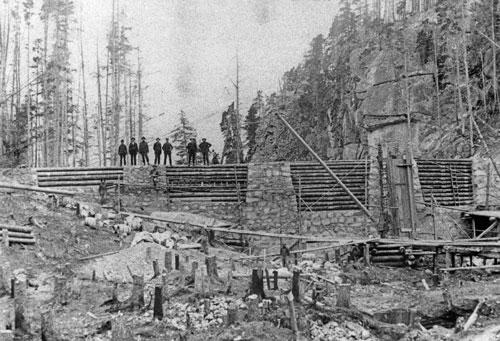April 2022 CarbonBetter® Impact Update
Every month we share the positive impact our customers have made through their use of CarbonBetter-certified 100% energy, which is included in every Provision clean energy supply plan. Each customer on these plans receives an email with their personal impact for the month, and this blog post reflects the impact all of our customers have made together since we became CarbonBetter-certified in October 2020.
We’re honored to be able to provide affordable clean energy that makes a real difference. Check out all of our past Impact Updates here!
Our Customers’ CarbonBetter Impact – April 2022 Update
70.3k
mWh
Provision customers have funded 70,304 mWh of clean energy generation, which could power 7,559 homes for a year.*
41.7k
tons
Provision customers have offset 41,681 tons of carbon, which is like avoiding over 103 million miles of driving.**
48.8k
trees
Provision customers have funded planting 48,782 trees, which may sequester 803 tons of carbon in their lifetime.***
Want to be included in our next impact update?
It’s easy to contribute to the positive impact we make each month. All Provision energy plans include CarbonBetter clean energy, which helps you make a difference automatically when you use energy at home.
Our customers help fund clean energy generation through renewable energy certificates, offset carbon through carbon credits, and plant trees to aid in reforestation and increase our natural carbon-capturing capabilities. It’s never too late to start using your energy for good.
Featured CarbonBetter Project: Dewey Lakes Hydroelectric
The Dewey Lakes Hydroelectric project is a run-of-river operation that encompasses 8.13 square miles of drainage in Skagway, Alaska. It is one of the oldest running hydroelectric projects and has been inducted into the Hydro Power Hall of Fame for being over 100 years old. In the 1890’s, many people came to Skagway during the gold rush and found themselves needing a reliable water source. In 1898, the Project Forebay Dam was created to provide a freshwater reservoir for the residents. This led to the Dewey Lakes Hydro in 1902 which used the city reservoir as its source of water while still providing water to the city. Later, the city began using a well system for its water supply instead of the freshwater reservoir.

Building the Dewey Lakes project in Alaska in 1898
Throughout the 20th century, more and more bodies of water were added to increase the storage capacity. Lower Dewey Lake was one of the new bodies of water that allowed for many additional features to be developed, such as diverting streams and drainages to the new lake. In 1930, the Federal Energy Regulatory Commission (FERC) issued a 50-year license for the project before the Alaska Power & Technology Company (AP&T) purchased the project in 1957. Dewey Lakes now provides year-round energy to Skagway under AP&T, including during the winter when it contributes about 160 kW to 300 kW of capacity during the winter.
Hydropower is energy from moving water and is one of the largest sources of U.S. renewable electricity generation. It relies on the water cycle and especially on the amount of precipitation that drains into different bodies of water. A run-of-river system like the Dewey Lakes Hydroelectric project involves the river’s current applying force on a turbine. There are also storage systems where water builds up in reservoirs created by dams and is then released through hydro turbines.
With the incorporation of the Dewey Lakes Hydroelectric project, AP&T has been inspired to change its business model to displace diesel generation of electricity with renewable hydropower. The company has grown to own 7 hydropower projects in 2015 while working on two additional projects. Since 1991, the company has converted from 95% diesel-based generation to 75% renewable energy. The Dewey Lakes project today is a powerhouse with four name units with a total nameplate of 943 kW. It consists of: Lower Dewey Lake Dam, Snyder Creek diversion dam, Icy Lake Dam, Upper Dewey Lake Dam, and Reld Falls Dam.
100% renewable electricity is included automatically in every Provision electricity supply plan, and we use renewable energy certificates, or RECs, to deliver on our clean energy promise. Homes are connected to the power grid by transmission lines, and the electricity that’s supplied is derived from a variety of generation resources, both renewable and non-renewable. This is because when clean energy is generated and put on the grid, it’s mixed with other fuel sources there, making it difficult for environmentally conscious consumers to supply their homes with 100% clean energy.
Provision ensures more clean energy is put on the grid by funding renewable generators through the purchase of RECs. These certificates fund electricity generation equal to the volume consumed by Provision customers, thus leading to a cleaner grid and delivering on pour 100% clean energy promise. So far Provision customers helped fund over 70,000 mWh of renewable electricity using RECs.
As a Provision customer, you’re funding projects like these that not only help you offset your carbon footprint as individuals but also contribute to a growing effort to make climate action accessible to all. Progress must be made by businesses, organizations, and individuals because we are all stakeholders in protecting our environment to create a more sustainable planet as our home. With Provision, we make it easy to use your energy for good.
Every Provision Customer Makes a Difference
About CarbonBetter Impact Calculations:
*The typical home in your area uses 9,300 kWh of electricity per year.
**https://www.epa.gov/energy/greenhouse-gases-equivalencies-calculator-calculations-and-references#gasoline
***https://www.epa.gov/energy/greenhouse-gases-equivalencies-calculator-calculations-and-references#seedlings
Impact is calculated based on our customers’ billings in the impact month, but planting, funding, and offsetting may not happen in that month. These activities must align with planting seasons and project life cycles to be effective. If you have any questions, please contact us at hello@getprovision.com.




